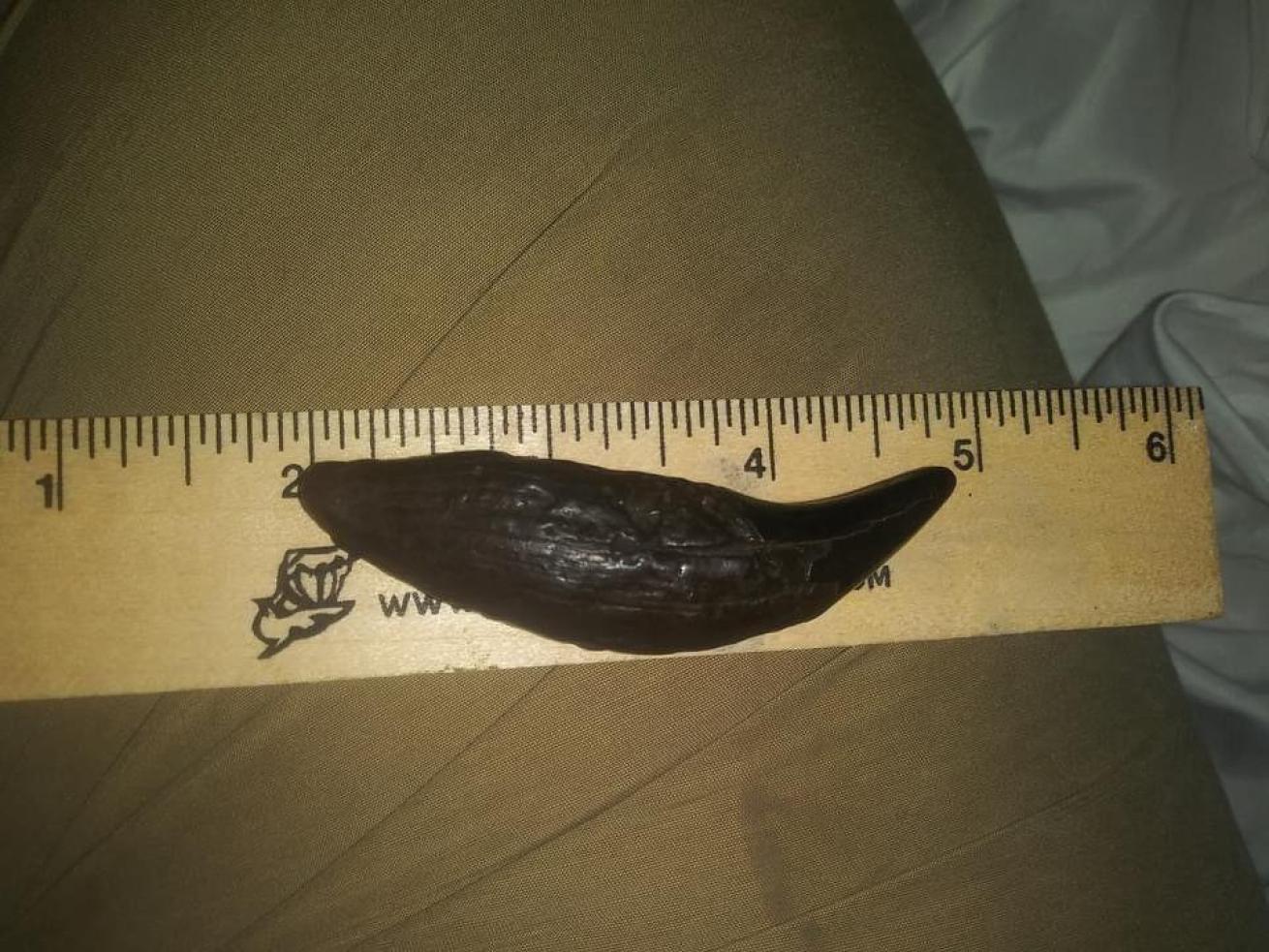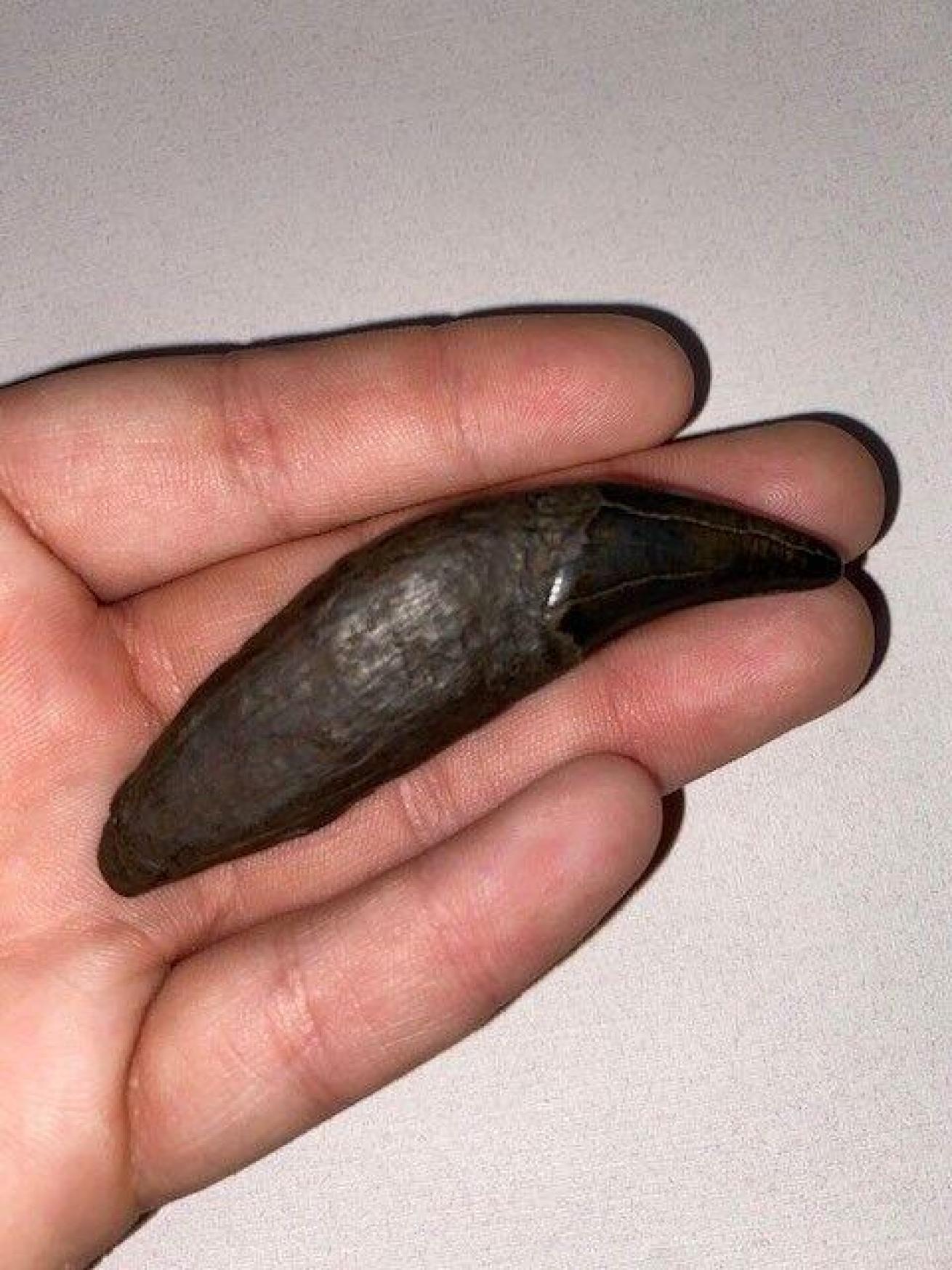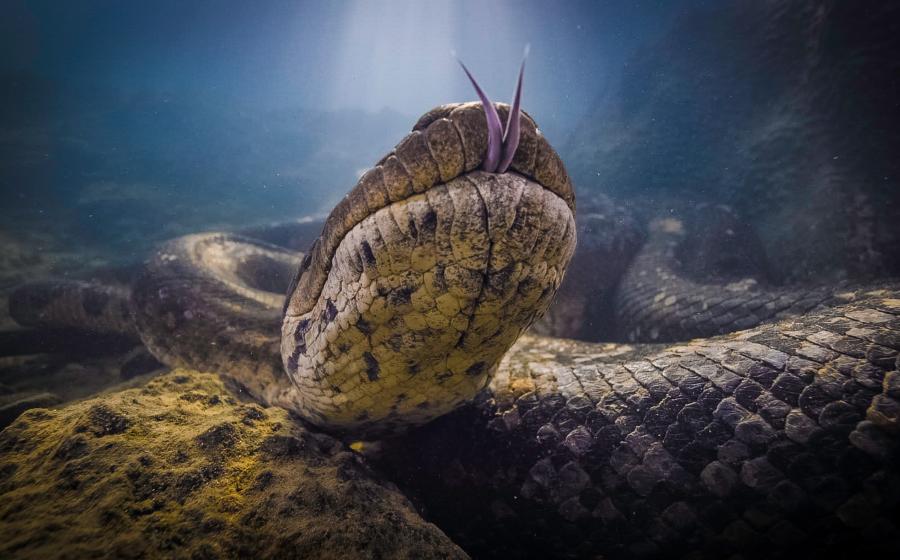Diver Discovers Fossilized Tooth of Prehistoric, 12-Foot-Tall Bear in River

Courtesy Eric ProulxThe prehistoric bear tooth was uncovered in the Cooper River, a swift blackwater dive.
A recreational diver fossil hunting in South Carolina’s Cooper River found a rare fossil of a prehistoric bear species.
The Cooper River is renowned for its fossils. The current is swift and the water is so dark that it’s considered a blackwater site, but divers come from across the U.S. to try their luck at uncovering prehistoric treasures.
Diver Eric Proulx was about 45 feet deep in the Berkeley County portion of the river with Cooper River Dive Charters when he uncovered the fossil.
"Visibility was probably less than a foot," Proulx tells a local ABC affiliate.

Courtesy Eric ProulxThe tooth of a Giant Short-Faced Bear (Arctodus simus).
Identifying the find took a village. Proulx initially thought it may have been from a marine mammal like a prehistoric dolphin or extinct whale, but when he posted a photo of his finding to the Palmetto Paleontological Society Facebook group, Dr. Robert Boessenecker of the College of Charleston identified it as belonging to a carnivorous land mammal. When Richard Hulbert, a paleontologist at the University of Florida and Florida Museum of Natural History, saw the tooth, he positively identified it as being from a prehistoric species.
At first, experts identified the fossil as the tooth of the American lion (Panthera atrox), a Pleistocene cat species that’s been extinct for about 10,000 to 12,000 years, but it’s since been re-classified as the remnant of a Giant Short-Faced Bear (Arctodus simus).
Giant Short-Faced Bears were alive around the same time period as the American lion — going extinct about 11,000 years ago — and were the “fastest running bear that ever lived,” according to the North American Bear Center, topping 40 miles per hour. True to its name, at 12 feet tall when on its hind legs and weighing over 1,500 pounds, they likely were the largest mammalian predators to inhabit North America.










